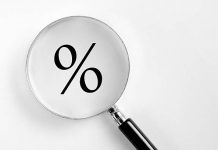The S&P500 (+0.23%) finally closed above its February, and all-time high. This was the fastest rebound from a bear market after the pandemic-induced sell-off erased more than 20% of its value in the first quarter of the year.
Nasdaq closed 0.73% higher.
In corporate news, Walmart’s second quarter results crushed analyst estimates as the online sales were nearly doubled due to the pandemic boost in e-commerce. But last month’s comparable sales growth failed to keep up with the good 2Q results on the back of waning government support and the delay in the agreement for the next round of fiscal aid.
Happily, soothing news came from the political front, as House speaker Nancy Pelosi said Democrats may scale back on their stimulus plans to find a common ground with Republicans to pass the much-needed fiscal rescue package and review the deal for additional items after the November election. Pelosi’s constructive comments pleased investors, who have been showing no signs of stress regarding Joe Biden’s lead over Donald Trump for the upcoming election.
News on US-China front was less encouraging. Chinese equities edged lower as Donald Trump ordered US colleges to divest from Chinese stocks. Escalating US-China tensions remain on the back of investors’ head, without however having a crucial impact on the overall market sentiment for now. Meanwhile, trade tensions arise between China and Australia, as Beijing ordered an anti-dumping probe against Australian wine imports. The AUDUSD remained bid, as stocks in Sydney (+0.75%) eked out gains despite tensions. But, China is Australia’s biggest trading partner by far, and deteriorating relations could heavily weigh on the Australian economy already ravaged by the pandemic.
Elsewhere, Nikkei added 0.20% despite a surprise 7.6% slump in June machinery orders versus a 2% rebound expected by analysts. But July exports contracted less than expected, even though the strong yen continues being a barrier to the recovery in Japanese goods foreign demand.
Activity on FTSE (+0.31%) and DAX futures (+0.21%) hint at a flat-to-positive open on Wednesday following an eventless Tuesday trading session.
The weak US dollar and softer US yields remain the major drivers in the FX markets. Due today, the FOMC meeting minutes could pave the way for an update of the Fed’s forward guidance policy in September, where the monetary policy could be linked to a flexible average inflation target, as worries that the unprecedented monetary and fiscal stimulus could have an overshooting effect on inflation and destabilize the market. The latter flexibility should give some breathing space to US policymakers if the consumer prices got out of control due to excessive, but necessary policy measures to keep the economy running.
The EURUSD advanced to 1.1965 on the back of a broadly sold US dollar and the pair is preparing to test the critical 1.20 offers as a result of an overstretched and persistent debasement in the greenback. We do not rule out the possibility of an advance above the 1.20 mark, but the current levels do no longer support the relative fundamental valuation. The slightest reversal in US dollar appetite could trigger heavy headwinds in the EURUSD and leave the euro bulls on the backfoot.
Released this morning, the British inflation data showed that the consumer prices unexpectedly rose 0.4% m-o-m in July, versus -0.1% expected by analysts, pushing the annual inflation to 1.0% from 0.6% printed a month earlier. The faster inflation pared the dovish Bank of England (BoE) expectations and encouraged a further rise in GBPUSD above 1.3260. The combination of soft USD dollar and firmer inflation should continue giving support to sterling’s bullish trend against the US dollar, though most of the Cable’s actual strength is due to the dollar weakness and there is a growing risk of a rapid unwind as the market is increasingly swamped with short USD positions.
In commodities, gold failed to consolidate gains above $2000 per oz and steadied a touch below this level in Asia. Even though the actual risk rally caps the short-term appetite in the yellow metal, the cheapening US dollar, soft US yields and mounting inflationary worries remain supportive of a strong gold demand in term. Yet, investors aren’t sure whether the historical high prices are a good entry point for hedging their risk positions. Price retreats however should attract dip buyers. Next support is eyed at $1940, minor 23.6% retracement on March – August rally.
WTI crude remains steady a touch below the $43 per barrel. Yesterday’s API data printed another 4.264-million-barrel decrease in US oil inventories last week. The more official EIA data should confirm a fourth straight week decline in US stockpiles. Investors will focus on OPEC-JMMC meetings today. OPEC and its allies decided to trim their production cuts on improved demand prospects in July and are not expected to step back from their latest decision at this month’s meeting. The group will likely send a message of compliance and discipline to the market. Market optimism and risk appetite keep the price of a barrel above the 200-day moving average ($42.50) for now, but the reluctance to carry the rally forward sends signs of fatigue and hints at an imminent downside correction in the oil space.













